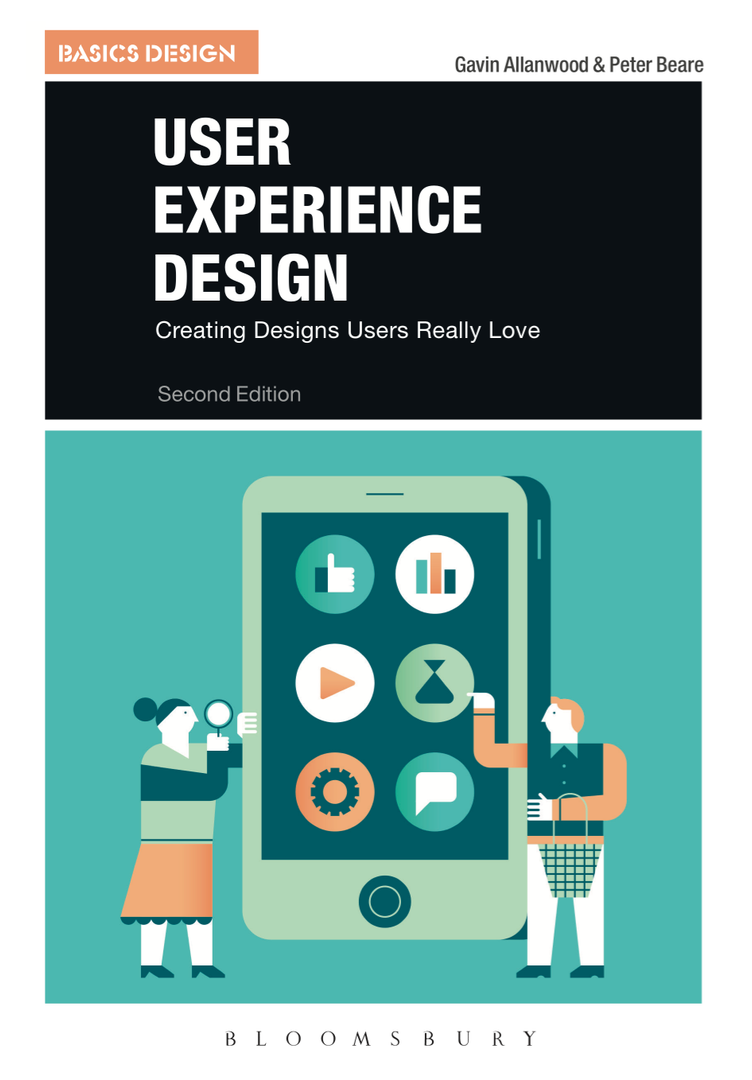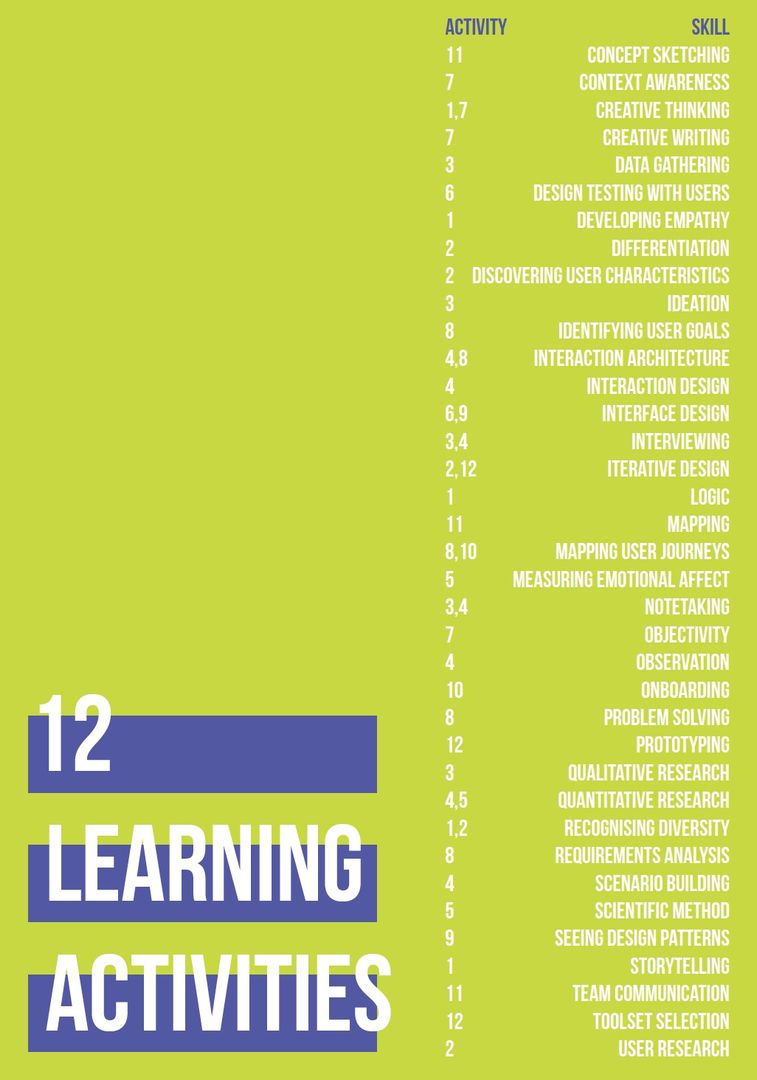Introduction
User Experience Design - A Practical Introduction, includes twelve learning activities.
They are all freely available here, together with resources to download where required.

We know, after reading first edition feedback from university teachers, that these activities really help to engage and stimulate students who are new to the topic. Most of the activities require little more than a pen and paper. For most, the ideal situation is to work in a group and to reach out to potential 'users'.
The activities help new designers to broaden their design thinking. They show how a range of relatively simple methods can give confidence and certainty, steering the design approach in the right direction.
Because these activities describe actual methods, students can use them to start applying skills needed in different UX Design roles. The methods include creative thinking, iterative design and quantitative research. It is probably best to start each activity in numerical order, the same order as they are found in the book.

There are 12 hands-on activities in the new edition introducing a diverse range of skills from concept sketching to user research.
Top